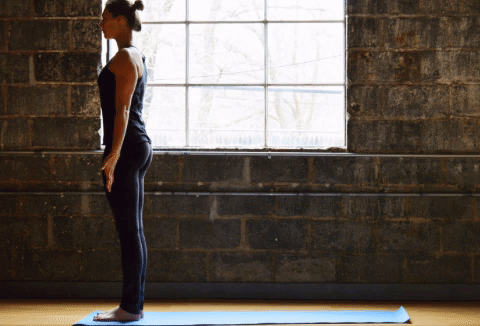Movement Matters
“Movement, just like the cell wall, the mitochondria, the cytoskeleton, and the nucleus is a part of every working cell. Cells don’t work without movement, and you aren’t fully operational without all of your cells working well. The movement of a part today is what affords it the ability to move tomorrow…”

Biomechanist, Katy Bowman, says we are likely to be the most sedentary generation that has ever existed.
I remember finishing up a yoga class one day and thinking to myself, will that have been the only time I’ll truly move my whole body today? The thought disturbed me a little because I realized it was partially true. By evening I would start to feel tight and stiff again—craving the freedom I had just felt in my body during and immediately after yoga. I was stunned to realize that the rest of my day I would be mostly still: After yoga, I would go sit in my car and drive home. I would then go sit at the table and eat a meal. Afterwards I’d go sit at my desk and do some work. To finish it all off, I’d sit on the couch and watch T.V. or something else that involved “vegging”. This could not be healthy, could it? I mean, most everyone I know lives this way. We sit. We stand for a little while. Then we sit some more. Unless I am making a purposeful effort to move all my parts throughout the day, the isolated and controlled exercises to I do “workout” are as Bowman calls it, like “processed food”.
In her insightful book, Movement Matters, she writes, “our exercises are just like processed food they’re not necessarily the most nutritious; they’re just easiest for us to produce within a sedentary lifestyle.” She argues that our efforts to live a life of convenience and ease, we actually make things harder on ourselves by outsourcing everyday tasks that would otherwise require full-body movement. We’re riddled with disease, unhappiness and a disconnection from ourselves and the natural world that stems from not moving.

Photo by Grace Brown Photography
The way that I feel after going for a hike with family or walking to a friend’s house even though I know it will take longer gives me a sense of calm and innate connection that feels so natural I hardly even realize it until I’m cranky and irritable, sucked back into my phone, vegging on the couch. Yet, these things aren’t isolated events, you can add movement to your everyday life, for instance, grinding your own coffee beans in the morning or walking to the store instead of driving, or even just making food from scratch more often offers you a more holistic way to approach these menial tasks and move yourself.
Bowman’s perspective is sobering but not without a silver lining. She affirms that our days of natural, whole-body movements are not archaic they have just been lost after years of giving these tasks away to others. In other words, we are empowered with the capability to take back control.
“They are still the motions required to get life’s necessities. We have not eliminated the need for these human movements; we’ve simply given them to someone else to do.” What’s even better? Movement is joyful and it is a gift. “Strong parts gift us the ability to move with enough confidence to not constantly watch the ground ahead of us. We can look up and around at the world that surrounds us.”


















